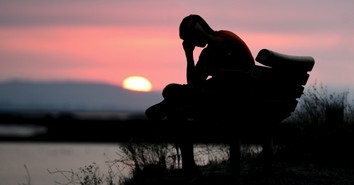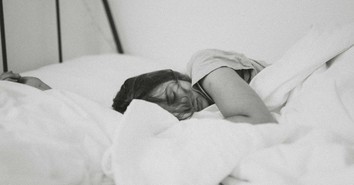The Remarkable Story of Mrs. Martin Luther, Katharina vor Bora
On Easter Day, April 4, 1523, Leonhard Köppe smuggled a group of nuns who were hiding in herring barrels out of a Cistercian convent in Nimbschen. One of these nuns was Katharina von Bora, who later became the wife of Martin Luther.
Katharina had lived in convents since she was very young, placed there by her parents who were too poor to supply her dowry. Unhappy there, Katharina found both the opportunity and inspiration to escape when the Protestant Reformation began to spread. She and several other nuns secretly contacted Martin Luther and asked for help to escape the monastery. Luther obliged.
At first, Luther and Koppe attempted to convince the nuns’ families to take them back. Their families refused, possibly because it was against canon law to take in an escaped nun. Instead, they found employment for as many as possible, and several others were married off to students training for the pastorate.
After two years, only Katharina remained. After neither of the two potential marriages arranged for her worked out, she told Nikolaus von Amsdorf, Luther’s friend and coworker, that she would only marry him or Luther. No one else.
Luther was reluctant to marry. After all, he had been declared an imperial outlaw at the Diet of Worms (1521), so anyone who found him could legally kill him. Understandably, he expected his life would end burned at the stake as a heretic. Nonetheless, he eventually agreed to marry Katharina in a small, private ceremony on June 13, 1525. He was 41; she was 26.
The Luthers moved into the Black Cloister, a former Augustinian monastery and dormitory for students at the University of Wittenberg. The new Frau Luther was no wilting flower, even in the face of her world-altering husband. She immediately took over the household, running the Black Cloister, and caring for the 30 or so students and guests who lived there as boarders. Katharina would’ve put any of today’s Instagram hipster homesteaders to shame, growing crops, keeping farm animals, and brewing beer on the side, all while serving her community as a part-time nurse and raising her six children and four other orphans.
While the marriage didn’t begin as a standard love match, a true romance of mutual respect and affection soon grew between Martin and Katharina. Martin, at times, consulted her on church matters and allowed her to deal with his publishers. Because she oversaw the household, Martin could devote his time to the church and the University.
He developed a sincere respect for his wife and loved her deeply. He referred to her as “Katie, my rib” and “the morning star of Wittenberg” (due to her habit of rising at 4 a.m. to get all her work done). She called Martin “Herr Doktor” throughout her life. Though Martin urged Katie to sell the cloister and move into a smaller house in the event of his death, she refused when the time came, perhaps because so much of her life and love were found there.
Katie was forced to flee Wittenberg twice during the First Schmalkaldic War (1546-47). She found the cloister and farms devastated upon her return. Had she sold the property earlier, she would have been financially stable. Instead, she was forced to move out of the cloister and was financially destitute. Only the generosity of Elector John Frederick kept the family alive.
In 1552, plague broke out in Wittenberg. Katharina left the city for Torgau, where her cart had an accident that left her seriously injured. She died in Torgau three months later, on December 20, 1552, at age 53. She is reported to have said on her deathbed, “I will stick to Christ as a burr to cloth.” She was buried in Torgau, far from her beloved husband.
This Breakpoint was co-authored by Dr. Glenn Sunshine. If you’re a fan of Breakpoint, leave a review on your favorite podcast app. For more resources to live like a Christian in this cultural moment, go to breakpoint.org.
Image credit: 1530 painting (public domain) via Wikimedia Commons
John Stonestreet is President of the Colson Center for Christian Worldview, and radio host of BreakPoint, a daily national radio program providing thought-provoking commentaries on current events and life issues from a biblical worldview. John holds degrees from Trinity Evangelical Divinity School (IL) and Bryan College (TN), and is the co-author of Making Sense of Your World: A Biblical Worldview.
The views expressed in this commentary do not necessarily reflect those of CrosswalkHeadlines.
BreakPoint is a program of the Colson Center for Christian Worldview. BreakPoint commentaries offer incisive content people can't find anywhere else; content that cuts through the fog of relativism and the news cycle with truth and compassion. Founded by Chuck Colson (1931 – 2012) in 1991 as a daily radio broadcast, BreakPoint provides a Christian perspective on today's news and trends. Today, you can get it in written and a variety of audio formats: on the web, the radio, or your favorite podcast app on the go.








